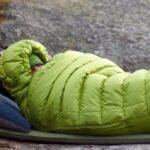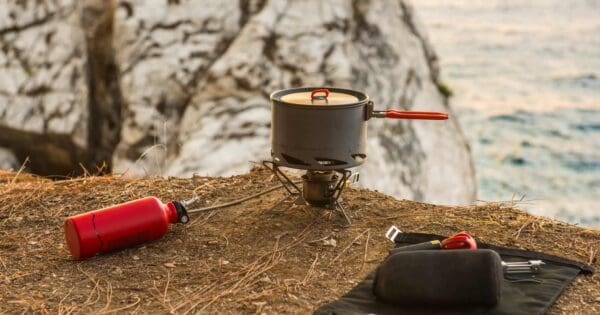One of the finer inventions among hiking gear, hydration bladders solved a big problem that plagued day hikers, bushwalkers and trekkers for decades. The problem hydration bladders so conveniently solved was how to pack significant amounts of water without using precious pack space—and do so in a comfortable and efficient manner. Hydration bladders are designed to transport water and make hydrating convenient and more efficient. In fact, with most hydration packs, you don’t have to stop, or even slow down, to take a sip of water; you simply grab the drink tube that’s connected to the bladder.
There is a downside of course to carrying all your water in what are often think flexible plastic. I am sure I am not the only hiker who has punctured their bladder to see all that precious water flowing out of your pack. For this reason, a lot of people still choose to carry multiple, more robust containers so the water is better protected. Iv’e also had people tell me that they find it hard to know how much water they’ve consumed when its stored in a bladder, out of sight in their pack. Regulating consumption is easier when you are holding a bottle in your hand. The downside to carrying water bottles is you lose the convenience of an on-demand bladder system.
What is a hydration bladder

Hydration bladders, for those not familiar with them, are soft-sided plastic containers of water. Made from flexible plastic, hydration bladders are flexible and squishy. The softness of the bladders allows them to fit neatly into your pack. Some packs will have a dedicated space for them while others require you to pack the bladder with the rest of your gear. I prefer a pack with a dedicated space as it helps prevent punctures from rubbing or sharp objects.
All hydration bladders have a long drinking tube. The tube allows you to drink water directly from the bladder while ‘on the go.’ With a hydration bladder, there’s no need to stop, take off the pack and then dig around for the water bottle.
What to look for
When you’re shopping for a hydration bladder, you want to make sure it’s designed for the activity you intend to use it for, and then consider things like capacity, fit and extra features. Make sure the hydration bladder you choose can carry enough water to meet your needs.
Hydration bladder capacity

Most hydration bladders are available in 1, 2 and 3 litre sizes. You may find some bladders larger or smaller, but typically 2 and 3 litre are the most common sized bladders used by both day hikers and backpackers. Water isn’t light. 1 litre of water weighs approximately 1kg, so think about how much you really need to carry and whether you’ll be able to refill along the way, and then purchase a hydration bladder in line with that. I have both 2 and 3 litre bladders to chose from based on things like the length of the hike, terrain and weather. Of course, you don’t have to fill the bladder to the brim on every adventure so you can really get away with one and only fill it to the level you need. With a 3 litre bladder, you can fill it halfway for a short hike or all the way for a longer adventure in a hot climate.
Hydration bladder features

Bite valve shutoff switch: Some bite valves twist to open and close; others have a switch to ensure water doesn’t get out when you don’t want it to.
Quick-disconnect tubing: Some bladders include a tube that easily disconnects from the body of the bladder, which is nice when it’s time to refill the reservoir mid-hike. You simply disconnect the tube with the press of a button and pull the reservoir from your pack. This allows you to leave the tube in place, which is especially handy if you have it routed through a tube portal on your pack.
Wide-mouth opening: Wide-mouth openings usually allow you to fit a hand inside the reservoir, which makes cleaning easy. If you choose a bladder with a smaller opening, you can purchase reservoir cleaners or a cleaning kit that includes brushes for scrubbing out the inside.
Cold weather add-on’s: Assorted winter add-on’s are available, including insulated sip tubes, insulated reservoirs, reservoir covers and bite valve covers. They can be handy, though they add a little bulk and weight to your system and to be honest, Iv’e never found them to be that valuable. To prevent water heating up in the tube in warmer weather or freezing in winter, I just blow the water back out of the tube and back into the bladder after I’ve had a drink.
Quality is important: When dealing with water, quality matters. As hydration bladders carry water and receive significant and harsh use, it’s important to buy a quality bladder to avoid leaks. Osprey, Camelbak, BlackWolf and Platypus all make quality hydration bladders that should last years—even with significant use.
Hydration compatible packs

A hydration compatible pack is best to completely benefit from a hydration bladder. Hydration compatible packs allow easy insertion of the hydration bladder between the packs frame and fabric. The packs also have the necessary attachment points to secure to hydration bladder to the pack. If you are shopping for a day pack or backpack, be sure to buy a pack that is hydration compatible. While all new backpacks for overnight hiking are hydration compatible, many generic styles of day packs still lack hydration compatibility.
Do you need a hydration bladder?
As mentioned earlier, some people are not really fans of hydration bladders as they allow you to ‘keep on walking’. Water ‘rest stops’ are an intrinsic part of the rhythm of the trail. When you stop for water, you are also stopping to smell the air, admire the vivid colors and shapes around you, and do a quick body check:
- How are your feet holding up?
- What’s up with the twinge in my right knee?
- Am I hungry already?
There are many reasons people like hydration bladders and there are many reasons people don’t (cleaning is one of them). Like all things hiking related, it all comes down to personal choice. I like them, I use them and if you haven’t, I encourage you to give one a try.





